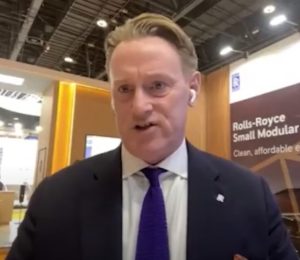Rolls-Royce: SMRs can power aviation’s clean fuel ambitions
FINN reporter Mark Pilling is joined by the Chief Executive of Rolls-Royce Small Modular Reactor (SMR) Tom Sansom to discuss the potential solutions that nuclear power can offer the aviation…
FINN reporter Mark Pilling is joined by the Chief Executive of Rolls-Royce Small Modular Reactor (SMR) Tom Sansom to discuss the potential solutions that nuclear power can offer the aviation industry during the World Future Energy Summit in Abu Dhabi.
Rolls-Royce launched it’s SMR business at the end of 2021 with around £500m worth of capital investment. Sansom said the SMR technology created a solution which would provide “a base load
always on, source of clean energy that will run for 60 years.”

He added the technology could be used for a wide number of applications: “So whether that’s grid electricity, whether that’s providing energy to produce hydrogen to produce synthetic fuel, obviously a range of customers who are looking at trying to solve those challenges. By bringing our SMR to market, it’s much smaller at 470 megawatts it’s able to attract capital and it’s a much more digestible nuclear solution than the large gigawatt programme is.”
“This technology is part of the solution”
“So we make this product accessible to a wider range of customers, large industrials oil and gas companies, national oil companies in the region here in the GCC who can then look at this technology and try to factor in how it can be incorporated into their own clean energy ambitions. We’re looking to find people today who’ve got the vision for how they’re going to solve the clean energy needs in 2030 and beyond, because this technology is part of the solution.”
He cited scale as the biggest challenge for bringing SMRs into reality: “Really, it’s about scaling up our engineering capability, it’s about finding customers prepared to make that commitment and we’re putting on the table now proposals and opportunities to enter into contracts, hopefully in the next two years, to sign up customers, so we can begin building the factories and delivering products to provide clean energy solutions in 2030 and beyond.”
Subscribe to the FINN weekly newsletter



